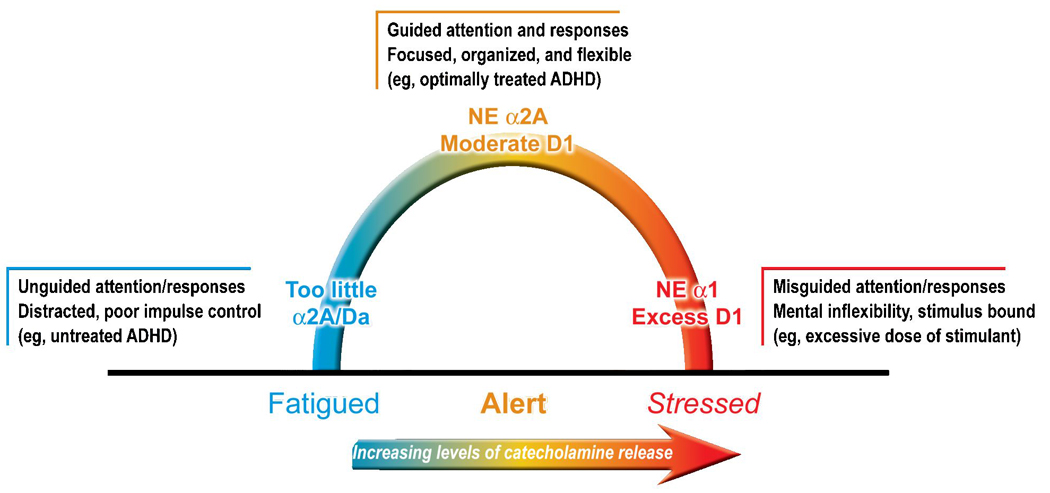Figure 2.

The PFC is very sensitive to its neurochemical environment; both insufficient and excessive catecholamine release impair PFC function. The catecholamines norepinephrine (NE) and dopamine (DA) are released in the PFC according to arousal state: very little during fatigue (and boredom?), a moderate amount of phasic release to relevant stimuli during alert, nonstressed waking, and high tonic release under stressful conditions. Moderate levels of NE engage postsynaptic α2A-receptors to improve PFC function, while higher levels engage α1- and β-receptors, which impair PFC function. Thus, optimal regulation of PFC function depends on postsynaptic α2A- and moderate D1-receptor stimulation. Animal studies suggest that therapeutic doses of stimulants improve PFC function by increasing endogenous noradrenergic and dopaminergic stimulation of α2A- and D1-receptors, respectively. ADHD = attention-deficit/hyperactivity disorder.
